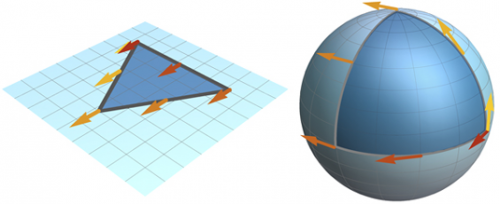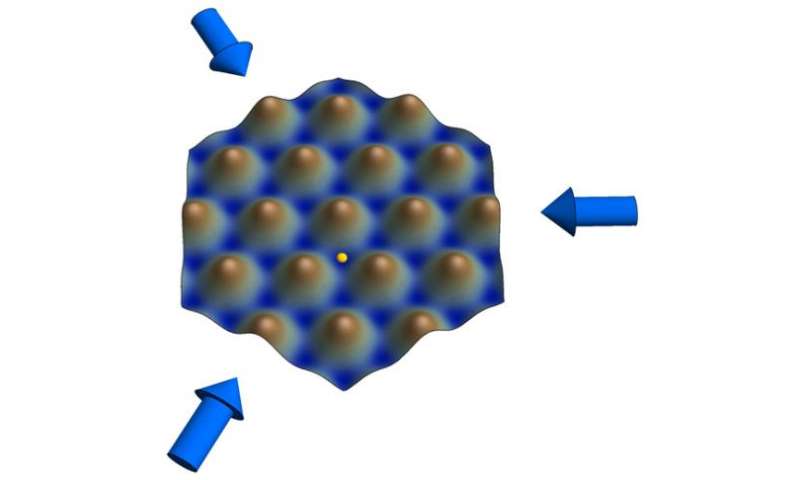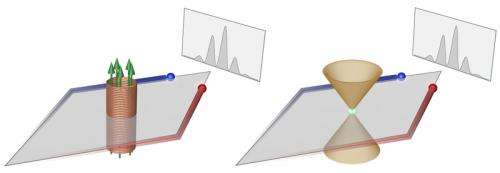Team realizes an Aharonov-Bohm type interferometer to measure the band topology in graphene type lattices

Among the most revolutionary concepts of modern physics is that the laws of nature are inherently non-local. One striking manifestation of this non-locality was famously predicted by Aharonov and Bohm: a magnetic field confined to the interior of a solenoid can alter the behavior of electrons outside it, shifting the phase of their wave-like interference although they never directly encounter the magnetic field.
Originally regarded as a mere curiosity, such "geometric phase shifts" are now known to have dramatic consequences for electron transport in solid-state materials, e.g., allowing unimpeded current flow along the edges of a material that is insulating in the bulk. In suitable crystalline structures, geometric phase shifts can arise even in the absence of any magnetic flux, instead induced by an elusive property known as "Berry flux" in momentum space that is difficult to measure directly.
Now, scientists at the Ludwig-Maximilians-Universität Munich, the Max Planck Institute of Quantum Optics and Stanford University have demonstrated a matter-wave interferometer that precisely measures Berry flux in an artificial crystal formed by a standing wave of light.
Their method, reported this week in Science Express may ultimately enable new approaches to quantum computation exploiting non-local, topological properties of matter for robust encoding of quantum information.
More information: "An Aharonov-Bohm interferometer for determining Bloch band topology." Science DOI: 10.1126/science.1259052
Journal information: Science , Science Express
Provided by Ludwig Maximilian University of Munich
























